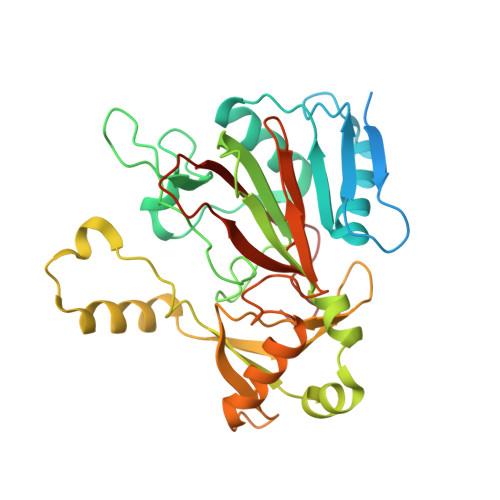Pathway from N-Alkylglycine to Alkylisonitrile Catalyzed by Iron(II) and 2-Oxoglutarate-Dependent Oxygenases.
Chen, T.Y., Chen, J., Tang, Y., Zhou, J., Guo, Y., Chang, W.C.(2020) Angew Chem Int Ed Engl 59: 7367-7371
- PubMed: 32074393
- DOI: https://doi.org/10.1002/anie.201914896
- Primary Citation of Related Structures:
6L6W, 6L6X, 6L86 - PubMed Abstract:
N-alkylisonitrile, a precursor to isonitrile-containing lipopeptides, is biosynthesized by decarboxylation-assisted -N≡C group (isonitrile) formation by using N-alkylglycine as the substrate. This reaction is catalyzed by iron(II) and 2-oxoglutarate (Fe/2OG) dependent enzymes. Distinct from typical oxygenation or halogenation reactions catalyzed by this class of enzymes, installation of the isonitrile group represents a novel reaction type for Fe/2OG enzymes that involves a four-electron oxidative process. Reported here is a plausible mechanism of three Fe/2OG enzymes, Sav607, ScoE and SfaA, which catalyze isonitrile formation. The X-ray structures of iron-loaded ScoE in complex with its substrate and the intermediate, along with biochemical and biophysical data reveal that -N≡C bond formation involves two cycles of Fe/2OG enzyme catalysis. The reaction starts with an Fe IV -oxo-catalyzed hydroxylation. It is likely followed by decarboxylation-assisted desaturation to complete isonitrile installation.
Organizational Affiliation:
Department of Chemistry, North Carolina State University, Raleigh, NC, 27695, USA.

















